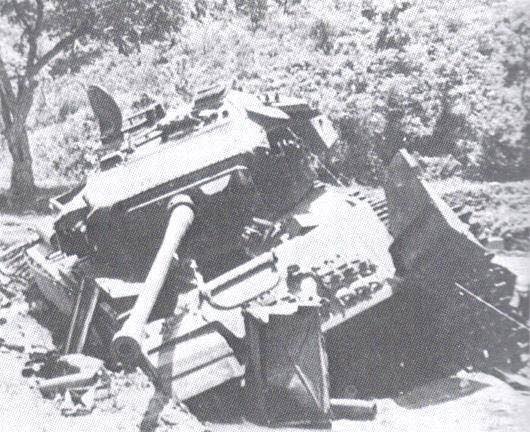Hussar Heroes on the Imjin:
Throughout the 23rd and 24th of April, the Glosters and Royal Ulster Rifles (RUR ) held onto the tracks that would allow a retreat from the Imjin River. Attacks on the night of the 24th drove the Fusiliers back even further, while the RUR hung on tenaciously to their vital position.
April 24th: Crescendo
The Royal Ulster Rifles Stand Fast
Mortarman Bob Nicholls of 170 Mortar Battery was on 398 with the Rifles, who, crouched in their slit trenches and behind the walls of the ancient keep, repulsed attack after attack. The Ulsters knocked hell out of them, he said. They had an abundance of grenades it is a good night time weapon and they were throwing them all over the place.
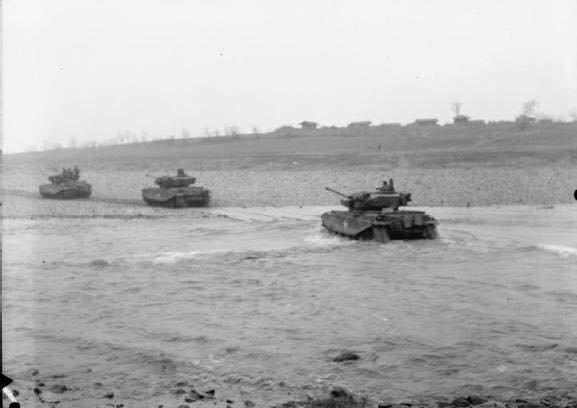
Working his Vickers Machine Gun section, Sergeant Doc Holliday swept cones of bullets over the attacking lines. Many Chinese, he noted, had no small arms, only grenades; the second wave picked up the weapons of the fallen.
If they wanted to commit hara-kiri, that was fine with us, he said. But I discovered then that there is a God: I called on him often enough. There were few atheists in the Imjin trenches, and in battle, where courage is as infectious as cowardice, inspirational leadership strengthens morale.
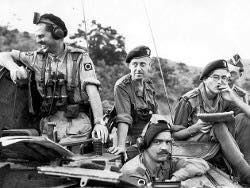
Defying incoming fire, Major Rickord toured his forward sections. He was a rough man, a hard man, said Farrell with D Company. He came walking along how the hell he wasn’t hit, I will never know. He paraded up and down, giving a bit of encouragement.
Farrell was finding it more effective to listen for the pitter-patter of little feet than to watch for the enemy in the visual confusion. With Chinese jumping up from cover and rushing forward You would see them running at you and they could run! the shooting was pop-up style.
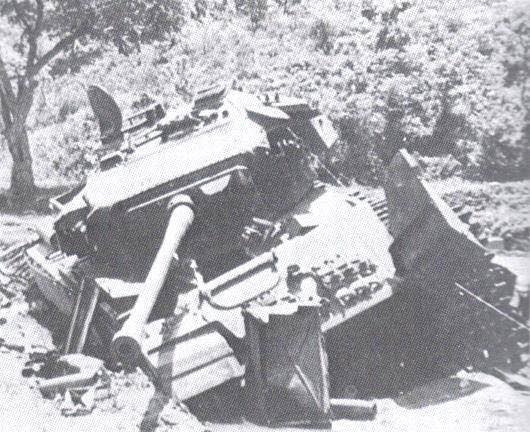
The Rifles Battalion HQ, in a re-entrant on the valley floor, was spotted. Mortar fire rained down, pulverizing the position. You could hear it whistling in then boom! You took cover, said Corporal Norman Sweetlove.
There would be a flash of light, splinters and shrapnel. You don’t see it, you feel it! Blast took his breath away; dust, dirt and scrub pelted down. Everybody was scrabbling, digging in deeper. Sweetlove’s mate Kelly told him, Don’t dig down – dig in! so the two tunneled into an earthen bank for overhead cover; McCord revetted his slit with wood from mortar ammunition crates.
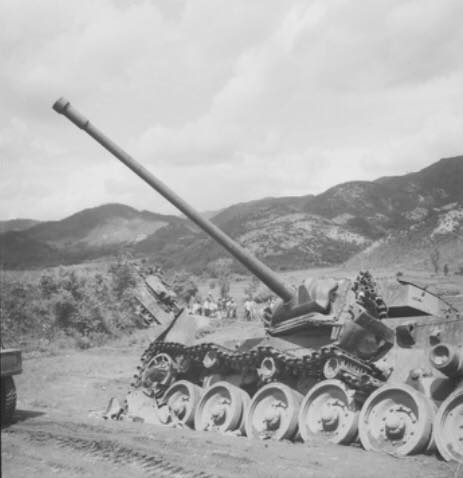
The bombardment lasted half an hour. When the smoke cleared, wrecked equipment and shredded tents were strewn over the cratered ground…
Even experienced soldiers were staggered at the ferocity of the assault. D-Day veteran and mortar man John Bayliss was in the rocks on the ridge with an American carbine in his shoulder, squinting down the barrel as crowds of attackers surged up the lower slopes. I had never seen anything like it, he said. In World War II you used to see Germans from a distance, but out here, it was close up! The density of numbers astonished him. They had come in with a platoon; if that didn’t work, they’d come back with a company, he said.
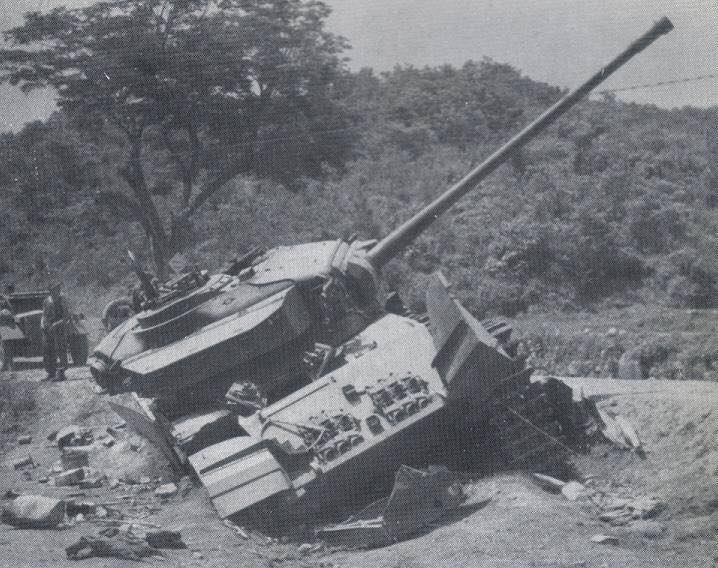
They were like bees – they were coming at us like ants!Bayliss and everybody around him was rapid firing as the range closed. Men furiously worked bolts; streams of cartridge cases poured from the smoking breeches of the Brens.
Bayliss carbine overheated and jammed. More enemy. Grenades ran out – but there were substitutes to hand. As the Chinese stormed up, the Fusiliers stood among the rocks and volleyed ration cans into the attacking wave. Tins of bully beef and fruit pudding thudded into the enemy ranks. They thought they were grenades, said Bayliss.
It gave us a bit of respite. The Chinese ducked into cover from the unexpected barrage – then charged again. Suddenly, they were among the Fusiliers…
Most dangerous for the integrity of the 29th Brigade was the Chinese deep penetration of the line between the Glosters and the Fusiliers which had cut off the former.
To counter the Chinese attack and protect the Glosters from being completely surrounded, the Philippine 10th Battalion Combat Team (BCT) was temporarily attached to the 29th Brigade.
A combined force of M-24 tanks of the 10th BCT and Centurions of C Squadron the 8th Hussars supported by infantry reached a point 2,000 yards (1,800 m) from Hill 235 on 24 April.
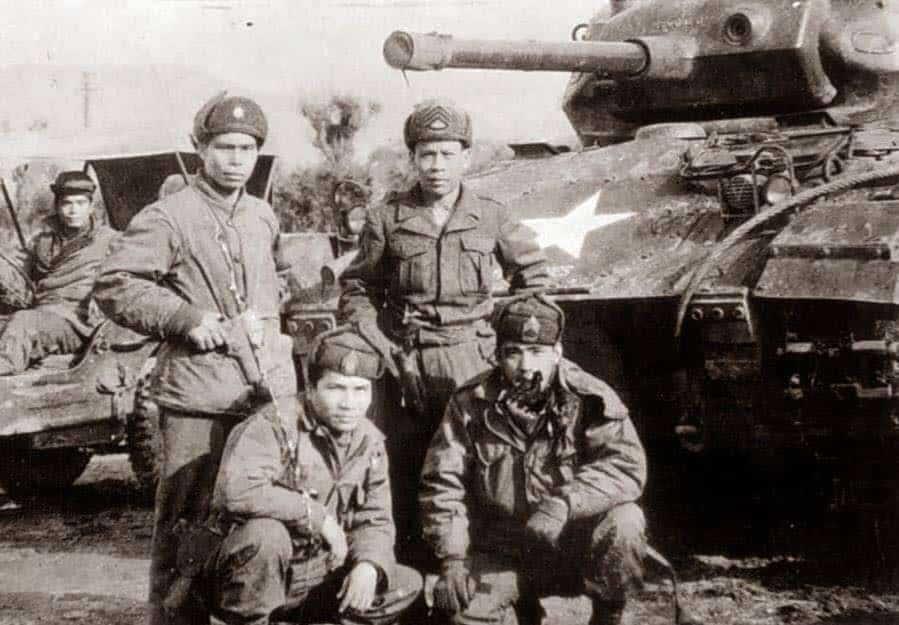
However, the column failed to make contact as the lead tank was hit by Chinese fire and knocked out, blocking the route and making any further advance against heavy resistance impossible.
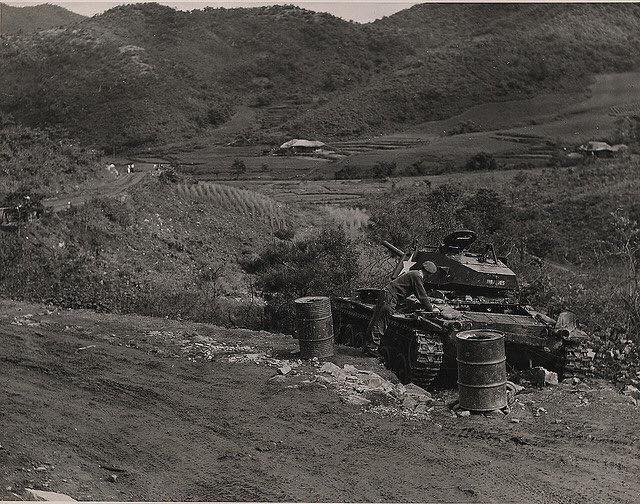
At this point, according to an official American narrative of operations, “the brigade commander considered it unwise to continue the effort to relieve the Gloucester Battalion and withdrew the relief force”.
The End for the “Glorious” Gloucester’s
The Gloucester Regiment guarding the crossing over the river withdrew to the very top of Hill 235. The Chinese infiltrated through the gap in the UN line meaning that the British on what is now known as “Gloster Hill” were surrounded.
The Glosters were cut off, and though they held out until the 25th, they were not relieved and most were killed or taken prisoner.

